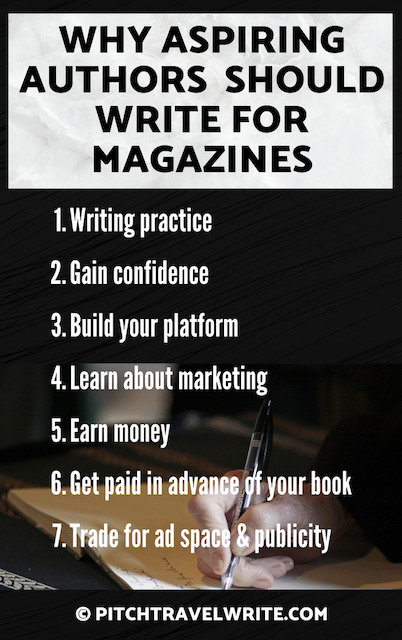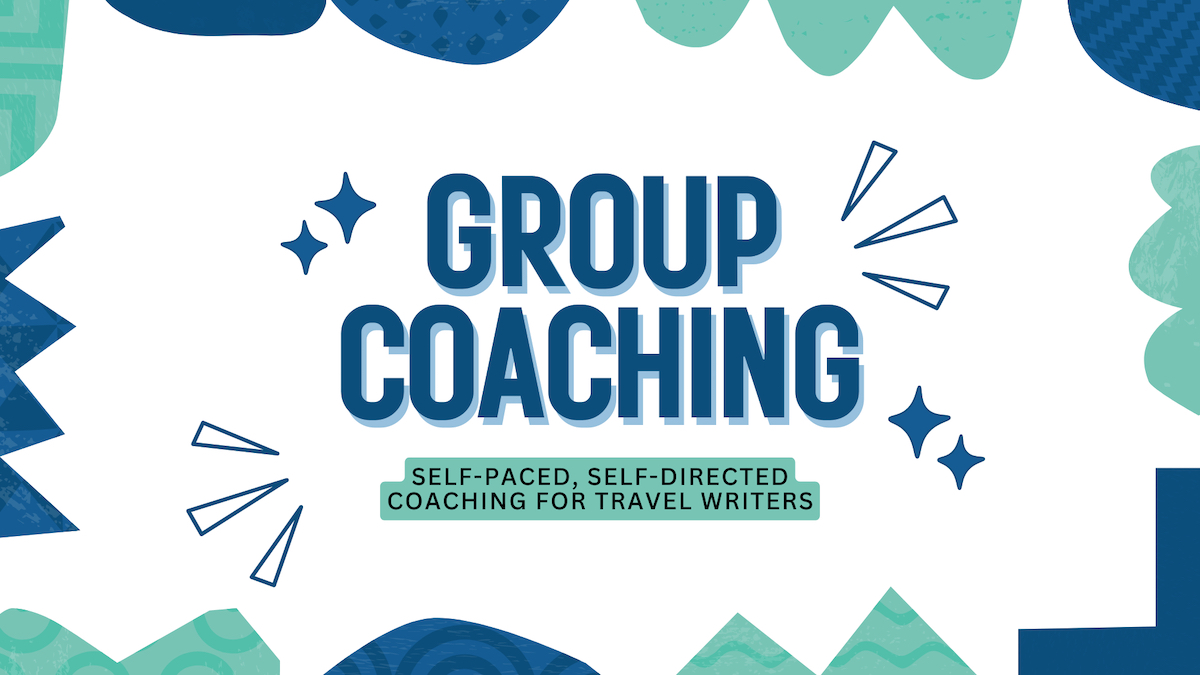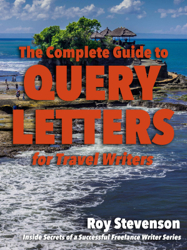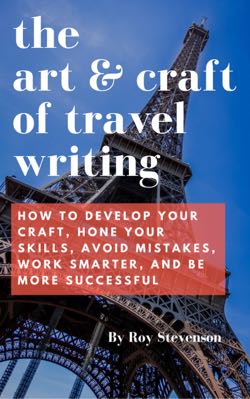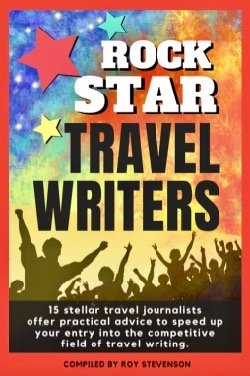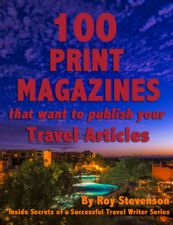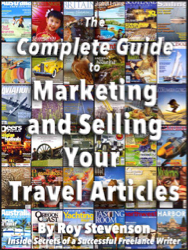- Home
- Business Basics for Travel Writers
- Best Travel Writing Advice
Best Travel Writing Advice
to Turn Your Worries into Wins
By Roy Stevenson
Beginners worry over imaginary things. Travel writers are no different. This article has my best travel writing advice for the worriers out there - and strategies to help you move forward.
Freelance travel writing is not for the timid or the indecisive. Many writers have a tendency to worry about things
that are highly unlikely to happen. Their emails to me are crammed with,
“What if…?” questions.
I started coaching travel writers in February 2015 and continue to do so today. During this period of time, I noticed some interesting and similar recurring habits among the new writers.
Helping them with these concerns is why they hired me in the first place. But the point is, my coaching clients aren’t unique in their concerns - it’s a universal problem.
I hear the same questions and concerns when I’m at conferences, in workshops, and even on press trips.
It’s human nature to hesitate when learning something new, and novice travel writers are no exception. What I’ve noticed is new travel writers second-guess themselves about things that will probably never happen, or things that are easily remedied.
Instead of sending out queries to magazines, the writers tie themselves up in knots and let these imaginary problems stop them.

Constantly asking “What if…?” may cost a travel writer many magazine assignments. It makes them reluctant to take action. Instead of functioning effectively, they get hung up on the “What ifs…?” and come to a halt.
I decided it was time to write an article about it.
In this post I’ve listed the worries, fears and concerns that I hear most often from travel writers.
Read them and see which of these things slow you down - or stop you. Then read my advice on what you can do about it to get yourself moving again.
The Best Travel Writing Advice Addresses Imaginary Fears and Worries
1. Too Many Editors Will Want Your Story
One of
the more common fears, for example, is that when you submit simultaneous
queries to a number of magazines, more than one editor will accept your
article for publication.
This kind of worry leads you to
querying the slow way (one query at a time) or limiting your
distribution list to just a handful of publications. The worry behind
this is that if you send out your query letter to too many magazines,
then too many editors will buy your story.
So what if more than one
editor wants to buy your story? That's a good thing!
It seems to me
you should be jumping up and down with joy, and writing posts to your
Facebook friends about your writing success. It must be a really good story idea. This is a good problem to
have!
There are solutions to this fear that more than one editor will buy your story. I addressed
them in in a separate article. I have at least four strategies to
handle this situation. (I wrote about the four simultaneous submissions strategies for
simultaneous acceptances here.)
My best travel writing advice: Get familiar with the strategies and
conquer your fear!
2. Withholding publications from your magazine distribution list
I’ve heard writers say that their story is only a good fit for one publication, or that a certain magazine wouldn’t be interested based on the advice of an editor from a completely different magazine.
Other travel writers don't think they're ready to pitch top shelf magazines.

My best travel writing advice? Don’t create roadblocks. Keep an
open mind when you create your distribution lists. If the publication
is a good fit for your story, put it on your list. There is no harm in
pitching every magazine that is a good fit.
You can't second-guess what the editor thinks. The only way to know is to send a query letter and find out.
And
don’t take advice from anyone except the editor of the publication
you're targeting. If you think the story is a good fit for a magazine,
send your query. This is between you and the editor you're pitching.
Other opinions don't matter.
Always find out for yourself whether the editor is interested by querying the magazine.
3. Worrying that one publication will want to buy "all rights" before you even query
One diligent travel writer I met was afraid to pitch a New York
newspaper because it buys all rights, meaning she wouldn’t be able to
sell it to other magazines.
Worse things can happen!
If
you'd be proud to have a particular publication as a byline, then sell it to
them. Let them take all rights if they pay well.
My best travel writing advice: You can always rewrite the story and sell it to other magazines.
The
strategies for simultaneous acceptances apply here, too. Stretch your
creativity and dream up new examples and a different story angle for a
second article on the same topic. It will be a good experience.
4. Fear of Following-Up With An Editor
Some writers are afraid of following up with an editor who expresses interest in your story but then doesn’t get back to you.
Editors
are busy people. Much of the time they are in the midst of meeting
some kind of deadline and your story idea isn’t the first thing on their
minds. Sometimes they simply forget to get back to you, or misplaced
your email.
My best travel writing advice: Follow-up politely after a couple of weeks. You’ll be doing them a favor by sending a quick email to
jog their memory.
5. Writers Guidelines Analysis Paralysis
Some writers get so absorbed in the writers guidelines details, they stop doing anything.
Don’t
get hung up on every detail in the writers guidelines. If you let
yourself get bogged down in the details, you won’t take the next step -
writing the query letter. This is a form of procrastination and it gets
you nowhere.
My best travel writing advice: Briefly skim through the writer’s
guidelines to get the basics, and then fire out your query letters.
Don’t over-analyze the details. You don’t have time.
After an
editor buys your story idea, you can go back and read more about that
specific publication before submitting your story.
6. Writing Uninformative Query Letters
Some writers make their query letters short because they read a book that said its supposed to be short.
But
many writers make them so short they are virtually useless. They don't
reveal anything tangible or enticing about the stories they were
pitching with such brevity.
My best travel writing advice: Your
query letter needs to be as long as it takes for you to paint an
enticing picture of your destination, and to sell your story. If you
can do it in one page, that’s fine. If it takes three pages, that’s
fine, too.
Make your query letter as long as it needs to be without rambling.
7. Not Send Queries Because You Don't Know How to Get Your Photos to an Editor
My best travel writing advice: Sell the story first. Send out your query letters. Then worry about the photos.
There are plenty of ways to get your photos to an editor.
Here are 4 ways to send photos to editors that I’ve used at one time or another:
1) set up a photo gallery online with a product like Smugmug (here's an affiliate link to a very easy and inexpensive app - I’ve been using it for several years and love it!)
2) Do it the old fashioned way and mail a CD with your photos to the editor.
3) Use a free app like Dropbox and send a link to the editor.
4) If your image files aren’t too large, and you don’t have too many, send them as email attachments.
My Best Travel Writing Advice: Even with minor bumps, you can still get published …
I’ve worked with the editors of 200 different publications, so I can understand why novice writers are reluctant to do certain things. You don’t want to upset the editor.
But, the fact is, while some of the things that worry writers may happen occasionally, they occur so infrequently that they are virtually non-existent.
Most of them are minor bumps on your travel writing journey.
Over the years I’ve lost a handful of assignments due to various circumstances, including poor timing, magazines going under, or new editors taking over a magazine. And, I’ve run into my share of less-than-professional editors out there (yes, Virginia, there are a few unscrupulous editors who don’t deserve their position.)
Other problems I’ve encountered include uncooperative museum curators, unhelpful or lazy tourist agency or CVB personnel, and a few other reasons why some of my stories never got to see the light of day.
But, despite these glitches, I’ve still had more than 1,000 articles published! Even with all these bumps in the road, I’ve shown that it’s possible to get published anyway.
So, what’s my best travel writing advice so you can move forward?
If you’re actually confronted by a potentially sticky situation, ask yourself “What’s the very worst that could happen?”
Your answer will usually be, “Well, I won’t get to write this article for that magazine”.
Without
wishing to sound cavalier about this whole deal, I have to say, worse
things could happen to you. It’s not a catastrophe like being diagnosed
with cancer. Or going bankrupt. Or surviving a natural disaster like an earthquake or tornado.
My best travel writing advice is whatever issue you experience, get it in perspective and get over it - as quickly as possible.
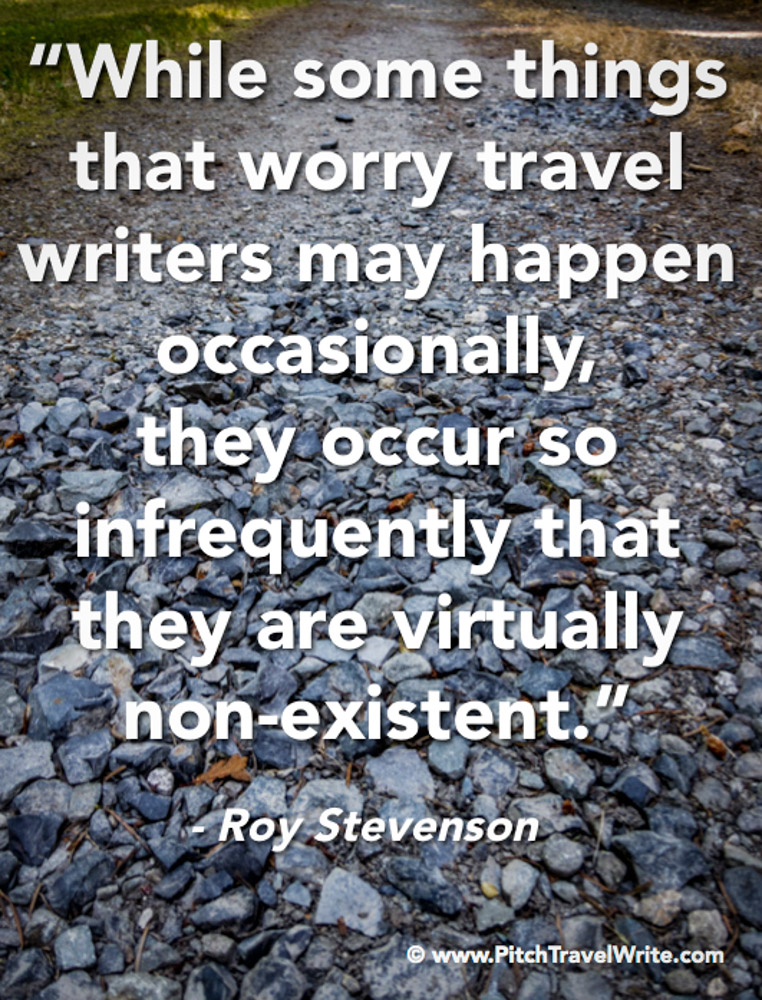
If one of your worries actually happens and you lose an assignment, don’t look at it as a personal failure. It’s not. Instead, see it for what it is - a lesson that can teach you something. Then, try not to let it happen again.
If one of your stories falls through, pick yourself up, dust yourself off, and keep moving forward.
Real travel writers simply move on and pitch their story to another bunch of magazines. And then they pitch another story idea to a whole bunch more magazines. They keep going.
After you experience a few unfortunate situations, you'll become savvy enough to recognize potential problems before they arise. Warning bells will go off, and you’ll learn how to take action to head off potential problems.
Over time, bad things will happen less as you get more and more stories published. Your writing path becomes smoother and the hurdles along the way don’t seem so daunting.
One day you’ll wake up and realize, “Hey, this travel writing stuff is a snap.” You will be able to pick a place that you’d like to visit, and round up some assignments to get a free trip there.
My final bit of best travel writing advice: Just keep pitching your story ideas! One day you will arrive at this wonderful worry-free destination, and experience more travel than you can imagine. Just say ‘no’ to second-guessing yourself and get your queries out there.
More Related articles . . .
Simultaneous Submissions: Four Strategies for Multiple Acceptances
12 Query Letter Mistakes and How to Fix Them
Your Travel Writing Craft

Roy Stevenson is a professional travel writer and the author of www.PitchTravelWrite.com. Over the past ten years, he’s had more than 1000 articles published in 200 magazines, trade and specialty journals, in-flights, on-boards, blogs and websites and has traveled on assignment around the U.S. and to dozens of international destinations.
IF YOU ENJOYED THIS POST, GET UPDATES. IT'S FREE.
